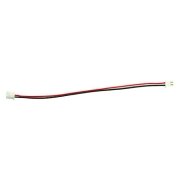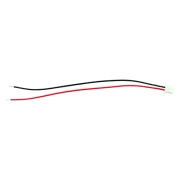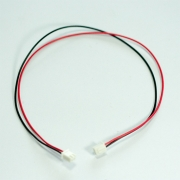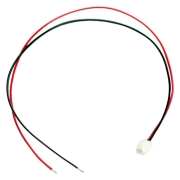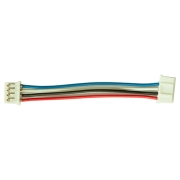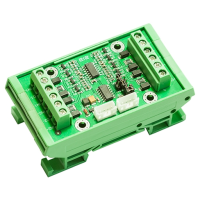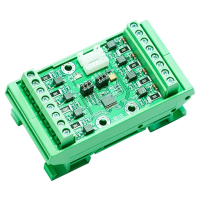*
The RoHS icon on this product indicates that the PCBs, components, solder, and chemicals are all lead-free and RoHS compliant. Additionally, this product is produced using a lead-free process. Unfortunately, we are currently unable to provide documentation confirming that this product is RoHS compliant.
Package Includes:
Notes:
- This board uses 4-pin connectors for I2C bus.
Resources:
*
If your browser program can't show a pdf file on a screen completely, please save it into your computer and open it with a pdf reader program.
Features:
- PCF8574 I2C bus chips for reliable communication
- 100kHz I2C bus frequency for standard speed communication
- Selectable I2C bus pulling-up resistors for better signal integrity
- Address by 3 jumpers for configuring up to 8 addresses on the I2C bus
- Up to 16 boards on a single bus for expanded functionality
- Compatible with most microcontrollers, making it versatile for various application
- Supports 2.5 to 5.5V microcontroller ports for flexibility in different systems
- 8 relay outputs for controlling devices remotely
- 12Vdc coil voltages
- Relay contact rating 0.5A @120Vac, 1A @30Vdc, 0.15A @48Vdc
- I2C operating voltage of 2.5Vdc to 5.5Vdc
- On-board reverse polarity protection circuits to prevent damage from incorrect power
- Small PCB size: 81.6 x 36.1 mm
This is an I2C relay board designed to be a remote relay output expander for the I2C bus, ideal for small space applications. It is based on the PCF8574 chip. Each PCF8574 and PCF8574A board can be connected on a single bus, supporting up to 8 boards. Therefore, a single bus can connect up to 16 boards in total.
Key features of the board include:
100kHz bus frequency for reliable communication.
Selectable bus pulling-up resistors for the SDA and SCL signals, ensuring better signal integrity.
8 small relays, with the option for selecting the coil input voltage from either the bus voltage or an external voltage.
Inverse polarity protection circuits to safeguard the board from damage due to incorrect power supply connections.
Double 4-pin bus connectors, making it easier to connect the bus compared to older versions.
LED indicator that lights up when input voltage is applied to the board.
Mounting holes compatible with older versions, such as EI2C-9AI and EI2C-9AIA.
Important Reminder:
To prevent damage to the board, do not plug and/or unplug I2C cables on the board while the power supply is on. Always turn off the power supply before connecting or disconnecting the I2C cables.





